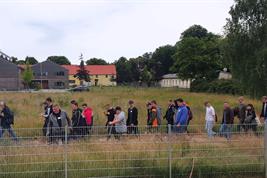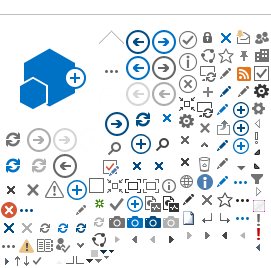08. July 2024

About 60 trainees, trainers, and students came to the Havelland Trainee Day 2024, put on by the Havelland District Farmers' Association and the Paulinenaue Research Station on June 14, 2024.
The day was full of different activities for young people from Havelland and other districts at the Paulinenaue Research Station of the Leibniz Centre for Agricultural Landscape Research (ZALF). The motto was "Grassland, moors, insects - you can never know enough." The trainees and students had the chance to test their knowledge and learn new things at several practical stations.
Deputy district administrator of the Havelland district Michael Koch welcomed the visitors and emphasized the important role of the station in researching grassland and moors. The Paulinenaue research station has 60 hectares of its own experimental area, explained Dr. Axel Behrendt, the station's head. "Our main focus is on limiting the shrinkage of moors, because this releases a lot of carbon and nitrogen." It's important to use soil-conserving technology and to graze animals, but a reasonable supply of potassium to the bog soil is also important.
Dr. Behrendt introduced the group to the unique groundwater lysimeter system, which is one of the largest facilities of its kind in Europe. It's a great example of the research being carried out at Paulinenaue. Over 100 lysimeters can be used to carry out long-term studies on the water balance and nutrient dynamics of lowland landscapes. Every pesticide must first undergo an extensive lysimeter test before it is approved, the scientist explained to the participants.
Moors are a big part of the landscape in Havelland. Over thousands of years, a peat body up to several meters thick has formed from dead plant material that does not decompose under water because there is no oxygen. When peatlands are drained, the carbon stored in the soil is released into the air as carbon dioxide, which affects the climate.
Stefanie Kunz, a scientist at the research station, shared her insights on peatland conservation. She talked about funding opportunities for permanent grassland and explained that certain indicator species must be identified on the land. In Brandenburg, 90 species are on the list of indicator species, including meadow knotweed, golden thistle, and marsh marigold. At another information desk, she invited visitors to identify grassland plants.
Dr. Martin Wendt gave a talk on the AgroScapeLab Quillow project, which is being run in collaboration with local farmers. The goal is to keep more insects in the landscape, for instance through staggered mowing and the cultivation of catch crops. After that, the participants got to try their hand at catching and identifying insects using a landing net correctly so that the insects do not becomeinjured and can fly away again.
Johannes Funke, the Havelland District Farmers' Association's managing director, was pleased with the turnout. "We had about 60 people come by, and the team from the ZALF Paulinenaue research station did a great job of engaging the younger crowd."
